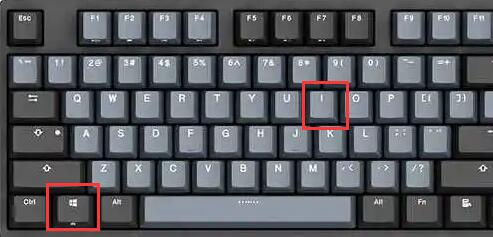I have always been vague about things related to this, such as call, apply, etc. This time I saw a written test question related to bind, so I wrote this article as a reminder.
Bind, like call and apply, can change the this pointed to by the context. The difference is that call, like apply, refers directly to the method, while bind returns a method after binding this, but the internal core is still apply.
Look directly at the example:
var obj = {
a: 1,
b: 2,
getCount: function(c, d) {
Return this.a this.b c d;
}
};
window.a = window.b = 0;
console.log(obj.getCount(3, 4)); // 10
var func = obj.getCount;
console.log(func(3, 4)); // 7
Why is this happening? Because this in the context of func is window! The existence of bind is to change this pointer to obtain the desired value:
var obj = {
a: 1,
b: 2,
getCount: function(c, d) {
Return this.a this.b c d;
}
};
window.a = window.b = 0;
var func = obj.getCount.bind(obj);
console.log(func(3, 4)); // 10
Bind is a function extension method of function. After bind, the code rebinds the this pointer (obj) inside func, but it is not compatible with ie6~8. The compatible code is as follows:
var obj = {
a: 1,
b: 2,
getCount: function(c, d) {
Return this.a this.b c d;
}
};
Function.prototype.bind = Function.prototype.bind || function(context) {
var that = this;
return function() {
// console.log(arguments); // console [3,4] if ie
Return that.apply(context, arguments);
}
}
window.a = window.b = 0;
var func = obj.getCount.bind(obj);
console.log(func(3, 4)); // 10
In fact, in my opinion, the core of bind is to return an unexecuted method. If you use apply or call directly:
var ans = obj.getCount.apply(obj, [3, 4]);
console.log(ans); // 10
It is impossible to use the abbreviated func function constructor, so use bind to pass this pointer, and then return an unexecuted method. The implementation is quite clever.
 演示win7调整屏幕亮度的方法Jul 08, 2023 pm 07:49 PM
演示win7调整屏幕亮度的方法Jul 08, 2023 pm 07:49 PM不同的电脑系统在调整屏幕亮度的操作方法上会有些不同,最近就有使用win7系统的网友不知道win7怎么调整屏幕亮度,看久了电脑眼睛比较酸痛。下面小编就教下大家win7调整屏幕亮度的方法。具体的操作步骤如下:1、点击win7电脑左下角的“开始”,在弹出的开始菜单中选择“控制面板”打开。2、在打开的控制面板中找到“电源选项”打开。3、也可以用鼠标右键电脑右下角的电源图标,在弹出的菜单中,点击“调整屏幕亮度”,如下图所示。两种方法都可以用。4、在打开的电源选项窗口的最下面可以看到屏幕亮度调整的滚动条,直
 win10监控摄像头打开照片的方法Jul 10, 2023 pm 09:41 PM
win10监控摄像头打开照片的方法Jul 10, 2023 pm 09:41 PM如果我们手头没有手机,只有电脑,但我们必须拍照,我们可以使用电脑内置的监控摄像头拍照,那么如何打开win10监控摄像头,事实上,我们只需要下载一个相机应用程序。打开win10监控摄像头的具体方法。win10监控摄像头打开照片的方法:1.首先,盘快捷键Win+i打开设置。2.打开后,进入个人隐私设置。3.然后在相机手机权限下打开访问限制。4.打开后,您只需打开相机应用软件。(如果没有,可以去微软店下载一个)5.打开后,如果计算机内置监控摄像头或组装了外部监控摄像头,则可以拍照。(因为人们没有安装摄
 PHP Fatal error: Call to undefined function ldap_bind()的解决方法Jun 22, 2023 pm 11:37 PM
PHP Fatal error: Call to undefined function ldap_bind()的解决方法Jun 22, 2023 pm 11:37 PM在使用PHP开发Web应用程序时,我们经常需要使用LDAP身份验证来保护应用程序的访问。然而,在有些情况下,当我们尝试使用PHP的LDAP功能来实现身份验证时,可能会遇到以下错误消息:"PHPFatalerror:Calltoundefinedfunctionldap_bind()"。这种错误消息通常会在应用程序调用ldap_bind()函数
 linux bind是什么Mar 25, 2023 am 09:39 AM
linux bind是什么Mar 25, 2023 am 09:39 AMlinux bind是一个用于显示或设置键盘按键与其相关功能的命令,可以利用bind命令了解有哪些按键组合与其功能,也可以自行指定要用哪些按键组合;其使用语法是“bind [-dlv][-f <...>][-m <...>][-q <...>]”。
 基于Java的机器视觉实践和方法介绍Jun 18, 2023 am 11:21 AM
基于Java的机器视觉实践和方法介绍Jun 18, 2023 am 11:21 AM随着科技的不断发展,机器视觉技术在各个领域得到了广泛应用,如工业自动化、医疗诊断、安防监控等。Java作为一种流行的编程语言,其在机器视觉领域也有着重要的应用。本文将介绍基于Java的机器视觉实践和相关方法。一、Java在机器视觉中的应用Java作为一种跨平台的编程语言,具有跨操作系统、易于维护、高度可扩展等优点,对于机器视觉的应用具有一定的优越性。Java
 win7怎么调屏幕亮度的两种简单方法Jul 08, 2023 pm 06:33 PM
win7怎么调屏幕亮度的两种简单方法Jul 08, 2023 pm 06:33 PM目前有很多屏幕亮度调整软件,我们可以通过使用软件进行快速调整或者通过显示器上自带的亮度功能进行调整。以下是详细的Win7屏幕亮度调整方式,您可以通过教程中的方法进行快速调整即可。Win7系统电脑怎么调节屏幕亮度教程:1、依次点击“计算机—右键—控制面板”,如果没有也可以在搜索框中进行搜索。2、点击控制面板下的“硬件和声音”,或者点击“外观和个性化”都可以。3、点击“NVIDIA控制面板”,有些显卡可能是AMD或者Intel的,请根据实际情况选择。4、调节图示中亮度滑块即可。5、还有一种方法,就是
 Go 语言中的方法是怎样定义和使用的?Jun 10, 2023 am 08:16 AM
Go 语言中的方法是怎样定义和使用的?Jun 10, 2023 am 08:16 AMGo语言是近年来备受青睐的编程语言,因其简洁、高效、并发等特点而备受开发者喜爱。其中,方法(Method)也是Go语言中非常重要的概念。接下来,本文就将详细介绍Go语言中方法的定义和使用。一、方法的定义Go语言中的方法是带有接收器(Receiver)的函数,它是一个与某个类型绑定的函数。接收器可以是值类型或者指针类型。用于接收者的参数可以在方法名
 PHP文件下载方法及常见问题解答Jun 09, 2023 pm 12:37 PM
PHP文件下载方法及常见问题解答Jun 09, 2023 pm 12:37 PMPHP是一个广泛使用的服务器端编程语言,它的许多功能和特性可以将其用于各种任务,包括文件下载。在本文中,我们将了解如何使用PHP创建文件下载脚本,并解决文件下载过程中可能出现的常见问题。一、文件下载方法要在PHP中下载文件,我们需要创建一个PHP脚本。让我们看一下如何实现这一点。创建下载文件的链接通过HTML或PHP在页面上创建一个链接,让用户能够下载文件。


Hot AI Tools

Undresser.AI Undress
AI-powered app for creating realistic nude photos

AI Clothes Remover
Online AI tool for removing clothes from photos.

Undress AI Tool
Undress images for free

Clothoff.io
AI clothes remover

AI Hentai Generator
Generate AI Hentai for free.

Hot Article

Hot Tools

Dreamweaver Mac version
Visual web development tools

Atom editor mac version download
The most popular open source editor

WebStorm Mac version
Useful JavaScript development tools

VSCode Windows 64-bit Download
A free and powerful IDE editor launched by Microsoft

Notepad++7.3.1
Easy-to-use and free code editor






